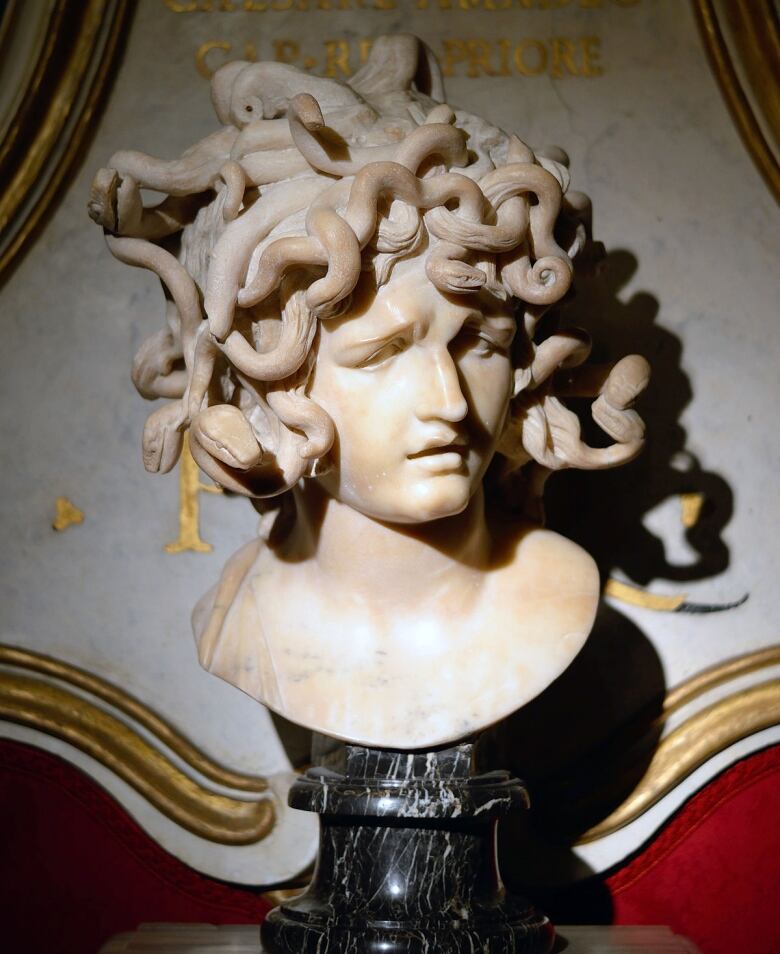What kind of monster are you? Ask Montreal's scholar of spook
Université de Montréal's Jean-Charles Ray created typology of monsters in Western literature

Nothing stimulates the eerie imagination like Halloween. Children and adults outdo one another in creativity when it comes to costumes.
But however outlandish or offbeat your Halloween getup is, chances are it falls into one of four categories. It turns out there are just four kinds of monster.
That's according to scholar of spook Jean-Charles Ray, who is about to complete a jointly administered Ph.D. at Université de Montréal and Université Sorbonne Nouvelle in Paris.
- Art therapy is nothing to be afraid of, but this might be the exception
- This artist draws monsters that represent fear, loneliness and feeling like an outsider
Ray's thesis examines monsters in novels and video games from a comparative literature perspective.
"Since I was a little kid, I was always drawn to monsters," Ray told Quebec AM this morning.
Ray says that monsters in the Western arts go back to Roman and Greek times. We're drawn to made-up monsters, he says, because they let us "face our violent emotions and play with our fears in a safe environment."
In English and French literature, Ray discerns some patterns.
"There are archetypes — themes that reappear from time to time." Based on commonalities he's identified, Ray classifies all monsters into four broad categories:
1. The ghosts of the past
Ghosts are ambiguous figures from the past who refuse to die.
"They keep coming back to haunt us. Their identity is not distinct," says Ray, adding that we identify with ghosts because they represent unfulfilled desires and lingering passions, of which we all have many.
Undead monsters like zombies belong to this category.

2. The barbaric other
The barbarian is an ancient Greek trope.
"We think of Athens as the source of democracy, but it was also a deeply xenophobic society," Ray says. They invented horrible myths to demonize the "other" as uncivilized and dangerous.
"To beat the barbarian, we have to become violent like him. But in defeating him, we also become barbarians," Ray says, explaining the irresistibility of this image.
The vampire is part barbarian.
"Dracula comes from Transylvania. He invades London. But he is also a kind of ghost, as he comes from the past," says Ray, adding that some monsters straddle categories.

3. The monstrous medusa
The snake-haired Medusa is another monster archetype.
Medusas are larger-than-life figures whose immensity makes them impossible to overcome.
"Even seeing a medusa is to be contaminated by it. It is an unspeakable horror. Nobody will believe anything you say about it," Ray says.
As representatives of insurmountable evil, medusas are exceptionally awe-inspiring creatures. H. P Lovecraft's character, Cthulhu, is well-known example of the medusa motif.
4. The crafty chimera
Crossing the other three categories at will is the chimera.
It is a shape-shifter that can assume multiple identities. It is characterized by a mixture of usually contrasting traits.
The part-human, part-animal werewolf is a classic chimera.
"It could also be a serial killer, like Hannibal Lecter, who was very cultured and nice on one hand, and very savage on the other," Ray adds.

Monsters of the modern age
Being popular and pervasive elements of literature, monsters easily carried over to the new medium of the video game, Ray says.
"The medusa is the most dominant type of monster in video games," Ray notes, citing games like Outlast and Resident Evil 7 in which "you mostly have to flee the monsters; you can't face them."
Ray has also traced an ongoing transformation of zombies to a modern-day tragedy.
The zombie, who once embodied elements of anti-consumerism, is now evolving toward the barbarian trope.
"It expresses a fear in Western societies from 9/11 that is triggered by the discourse of a war between civilization and barbarism. It expresses the difficulties of societies facing violence that you can't understand."
Although his insights into monsters are profound, Ray's costume for today is rather prosaic.
"I'm going to a TV-serial-themed Halloween party. I'll be dressed as the Daredevil," Ray confesses sheepishly.